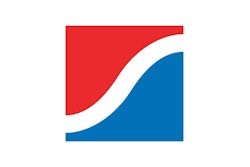
In January 2020, the funeral for Windows 7/Server 2008 (Microsoft) will take place. The headstone has been chosen and engraved, and will read something like this:
Windows 7/Server 2008
October 22, 2009 - January 14, 2020
Indeed, this will signify the end of life for an operating system that just less than 40% -- or 637 million -- of the world's workstations are still operating on.
Let's take a look at some of the important questions we are hearing on a regular basis from our partners and practice owners.
What does this mean for my practice?
 Tom Terronez is the CEO of Medix Dental IT.
Tom Terronez is the CEO of Medix Dental IT.In short, when Microsoft discontinues support, the systems will work, but Microsoft will stop releasing security updates. This will leave your systems vulnerable to new viruses and malware, and make your practice an easy target for hackers. If a vulnerability is found, Microsoft will not release a patch to fix it.
Your entire network becomes vulnerable to cyberattacks and data loss, making your systems noncompliant. Some dental software vendors may also stop supporting your computers, putting your practice at risk for costly fines and reputational harm.
What can I do?
Upgrade now.
Transitioning operating systems takes careful planning; from considering compatibility with practice's existing software and technology to maintaining your practice's budget.
Now that you're basically an expert on what the Windows 7 end of life means, let's get to the nitty-gritty of it: Is an upgrade compatible with the practice management, imaging, and other hardware/software you are already using?
Most practices use Dentrix (Henry Schein One) or Eaglesoft (Patterson). The following are the details surrounding those systems:
“Transitioning operating systems takes careful planning.”
- Dentrix G4 and G5 (up to 15.1) will not work with Windows 10, however Dentrix G5 (15.2), G6, and G7 are compatible with Windows 7 and 2010. In this case, upgrading to Windows 10 from Windows 7 would also incur the need for a practice management update to remain compliant and compatible.
- Similarly, for Eaglesoft users, Eaglesoft 16 and 17 will not work with Windows 10; however Eaglesoft 18, 19, and 20 are compatible with both the exiting Windows 7, as well as Windows 10.
- Most imaging systems, such as all versions of DEXIS (KaVo Kerr), are compatible with Windows 10. Regardless, all imaging platforms should be checked for compatibility before updating to Windows 10, as should server OS compatibilities.
I tell our existing and potential clients it is imperative they contact their informational technology vendor or company to begin planning.
Tom Terronez is the CEO of Medix Dental IT.
The comments and observations expressed herein do not necessarily reflect the opinions of DrBicuspid.com, nor should they be construed as an endorsement or admonishment of any particular idea, vendor, or organization.



















